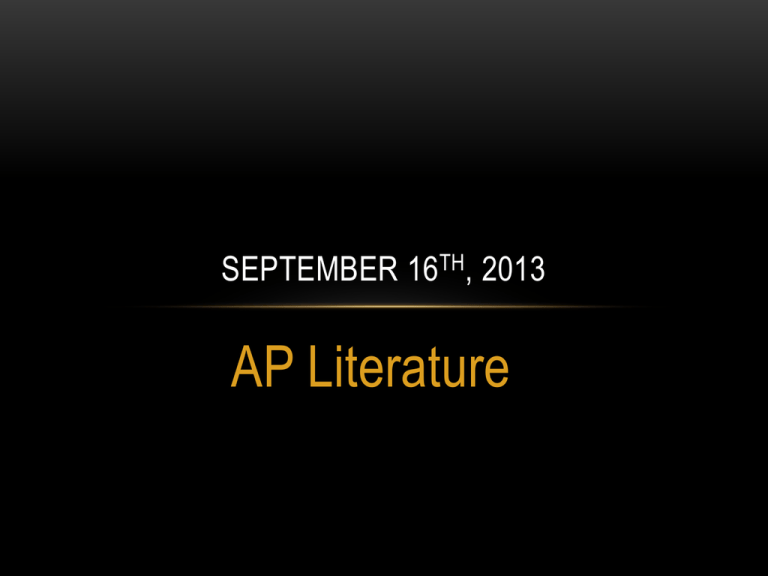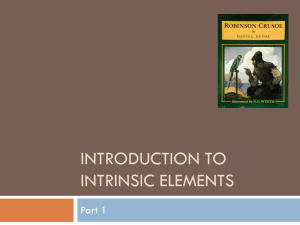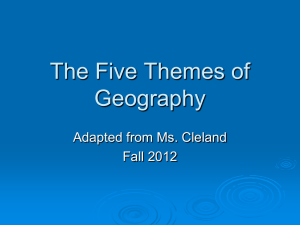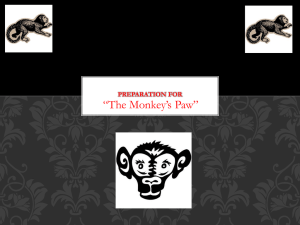
SEPTEMBER 16TH, 2013
AP Literature
A STREET CAR NAMED
DESIRE
Tennessee Williams
BACKGROUND INFO ON THE AUTHOR
• Born Thomas Lanier Williams in 1911 in Mississippi
• A near fatal childhood illness, coupled with a
protective mother, kept him from the company of other
children.
• His weak physical condition, combined with the
influence of his delicate mother, earned him the
ridicule of both other children and his highly masculine
father, who nicknamed Williams, “Miss Nancy”.
A MASTER IN THE MAKING
• Williams turned to writing as an escape from the cruel
world around him.
• In 1938 after receiving a degree from the University of
Iowa, Williams moved to New Orleans, where he had
his first homosexual experience. (His first and last
affair with a woman had been at Iowa).
• This was the beginning of a life of sexual promiscuity,
which also defines many of his characters (including
Blanche).
• Williams changed his name to Tennessee.
• By 1940, Williams’s sexual and social identity
had been established.
• Williams—highly successful at this point in his
life—floods his work with sex, violence, and
personal destruction.
• His greatest characters are outcasts—usually
because their sexual desires put them at odds
with conventional society.
• “Desire” is a central word in Williams’s
work, but not necessarily meaning lust; it
is the struggle to attain, through sex, some
psychological and spiritual state that is
always unattainable.
• Blanche will say, “Death […] the opposite
is desire.”
• Williams became increasingly dependent
on prescription drugs and alcohol,
especially after the death of his long time
partner, Frank Merlo.
• Williams died in 1963 in a NYC hotel room
after choking on the top of a plastic pill
bottle.
IMPORTANT CHARACTERS IN STREETCAR
• Blanche DuBois
• Stella- Blanche’s younger sister
• Stanley- Stella husband, a Polish
immigrant
• Mitch- friend of Stanley’s and love interest
of Blanche
THEME
Theme
o Theme is the central or main idea of a literary work.
o Themes exist in fictional stories.
o A theme is the message or lesson that an
author is conveying through the story.
What am I trying
to teach you?
Themes are often what make a story memorable. Long after
reading a story, we may forget the characters’ names or the
plot, but we will always remember what we learned from
reading the story. That lesson is what we call the theme in
literature.
Living a simple life leads
to greater personal
freedom.
Appearances can be
deceiving.
True friends are
hard to find.
Themes are built on the understanding that life
experiences are common to all of us. Readers build
connections to stories through universal themes.
Theme vs. Topic
Be careful that you do not confuse the theme with the general
topic of a passage.
The topic can usually be identified with one or two words.
Eastern Europe, pretzels, bike riding, Abraham Lincoln
The theme is usually expressed in a sentence that reveals the
story’s message.
Always be satisfied with what you have.
There is no substitute for hard work.
Revealing Theme
Themes can be revealed through a character’s
actions.
Do not disturb what is
meant to be peaceful.
Themes can be revealed through conflict in the story.
Problem:
Solution:
Theme:
Two friends find
a wallet. One
friend wants to
return it while
the other wants
to keep it.
They return the
wallet and share
a small reward.
Making the
right decisions
can lead to
rewards.
LITERARY 3X3
LITERARY 3X3
• The Literary 3x3 is a simple and ultra brief
writing activity to prompt students to think
outside the plot
• The task: students summarize the novel/story
they have read without using specific names or
events
• The catch: they must create this summary using
only 3 lines of 3 words each.
LITERARY 3X3
EXAMPLES
• The fun comes out in the discussion: consider these
examples of “3x3”s for these popular Disney movies –
can you guess what they are?
A.
B.
Arrogance transforms
handsomeness
Mistake creates captivity
Inner beauty conquers
Curiosity seeks freedom
Silence creates confusion
Love breaks spells
C.
Innocence craves recognition
Guilt prompts desertion
Duty calls home
LITERARY 3X3
• The 3x3 exercise forces students to think
outside the “main character does
this…then this…the end” type of formula.
• Let it be a game – students should try to
create the most insightful 3x3s
• Use the words generated to prompt further
writing
LITERARY 3X3
• Try it!
• Pick a familiar book or movie (let us know
which!) and write your own 3x3
• Let’s share!
• Remember this exercise, we will be making 3x3s
with many novels, short stories, etc.
• The RULES are on the next slide…
RULES
3x3 will use:
3x3 may use:
3x3 will not
use:
•Complete
sentences
•Effective word
order
•Strong words,
especially verbs
and adjectives
•Abstract nouns
•Contractions
using “is”
•Proper
nouns/names
•Repeated words
•“to be” verbs
•Pronouns
•Cliches
•a, an, the
• This process of expressing complex ideas
with very specific language helps students
examine literature in real depth, as well as
explore subtle nuances of specific diction.
Students argue persuasively for one word
over another as they try to get to the very
essence of a story, exploring the text in
depth for evidence to support their claims.
THE LION KING
Click to Return to 3X3s
THE LITTLE MERMAID
Click to Return to 3X3s
BEAUTY AND THE BEAST
Click to Return
to 3X3s












